By Dan Weisz
Here are my final photos of birds from my long weekend at Rocky Point, our local beach! The first group includes several shots of Brown Pelicans flying in the early morning. I was sitting in one spot, waiting for the birds to lift off from the rocks and fly towards the east. Brown Pelicans are found along the southern coasts of the United States. With their large body, oversized bill, and long neck, it doesn’t seem like they could fly easily but they are very elegant in the air and soar easily over the water. They will glide just above the water often and they glide higher in the sky. Their body looks comical but they are great flyers.
Wings Up!
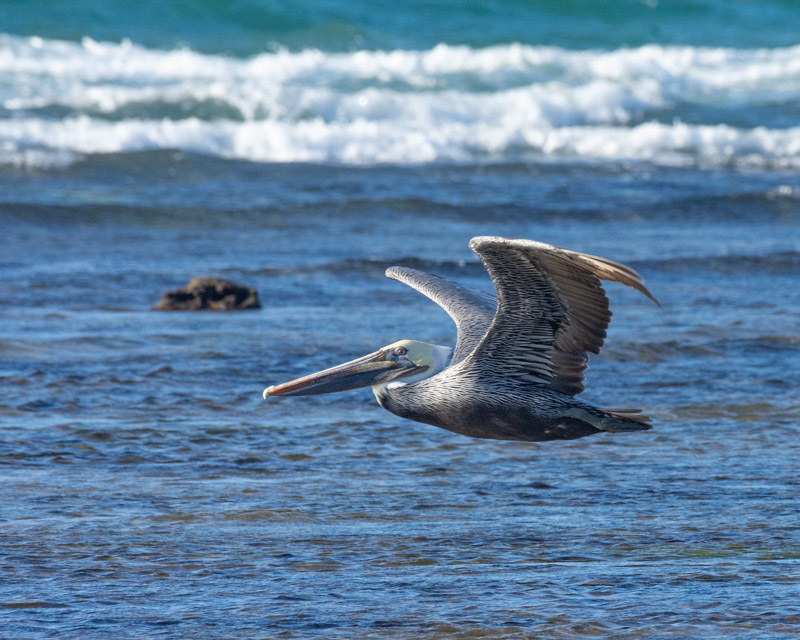
Wings Down! During breeding season in the spring/summer, Brown Pelicans look very pretty with a golden wash on their heads, dark reddish/brown necks and red on their beak and pouch. However during non-breeding season they lose their colors and and their backs take on a silvery/gray look, even appearing striped at times. They mostly lack any color of note at this time.
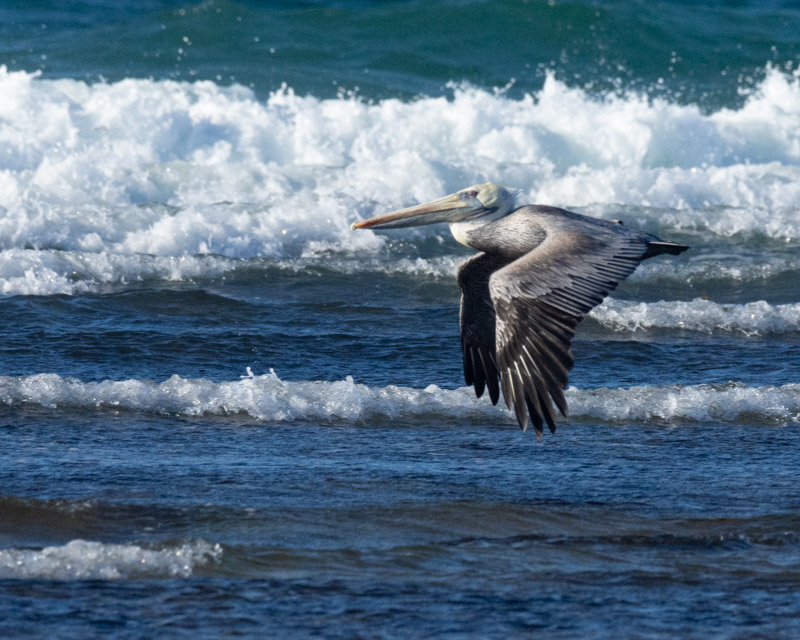
Wings in-between! This bird is gliding along with its wings bowed to catch the air.
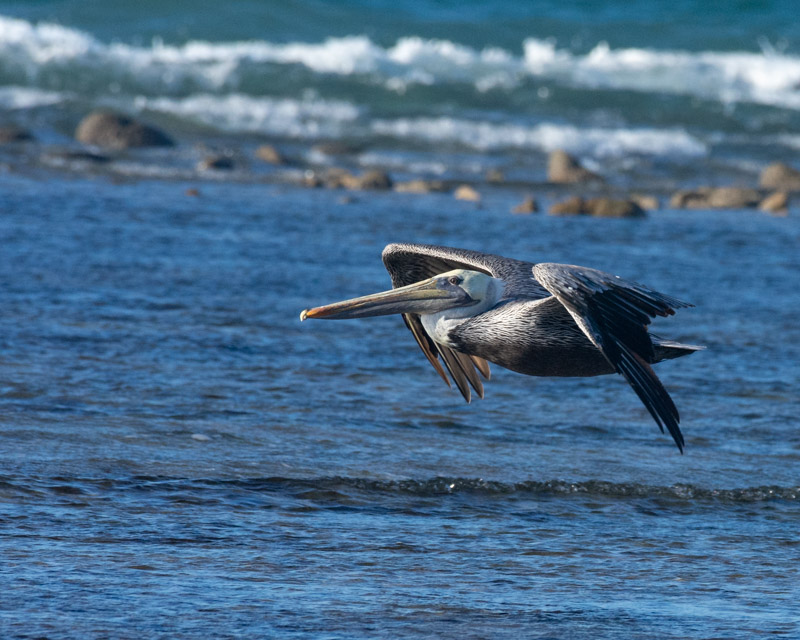
Pelicans often fly in formation and they are very social birds. Brown Pelicans can weigh up to ten pounds and have a wingspan of six to seven feet.
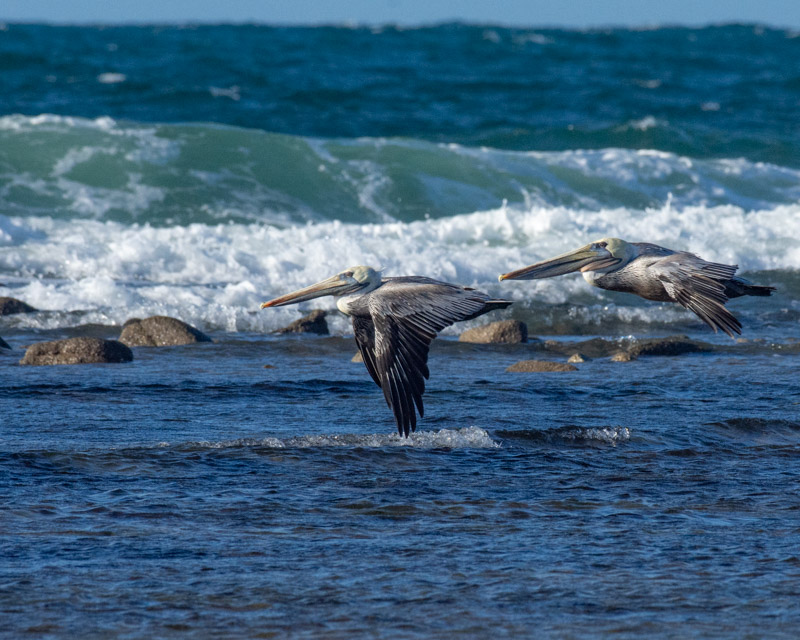
Here is what Brown Pelicans look like when they fly overhead! At this time of year and from this angle, they look like they are wearing a skeleton costume. Their wingspan is huge as is their bill.
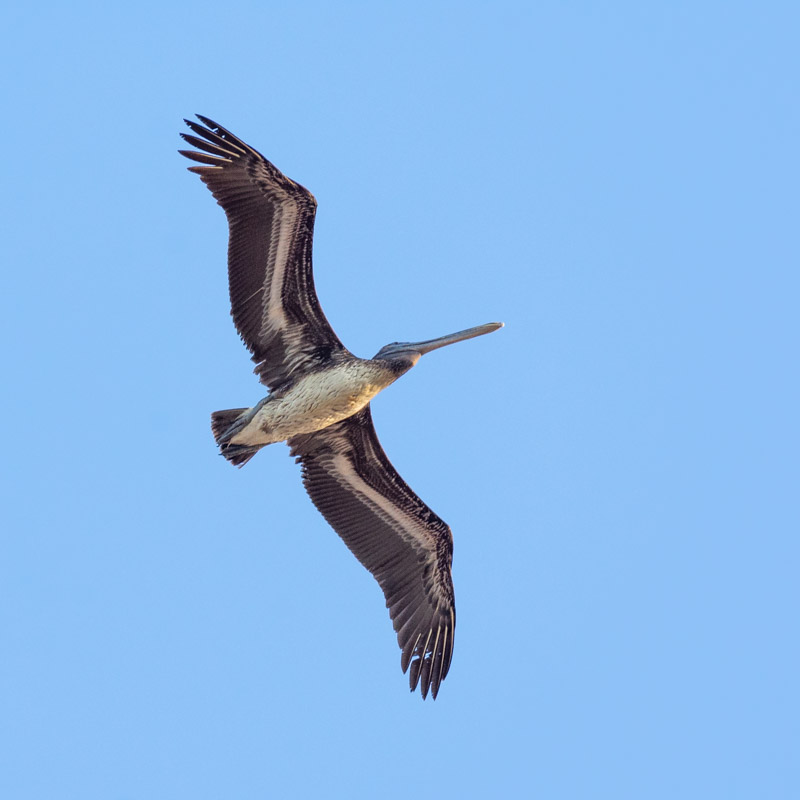
Several egrets were fishing for breakfast in the shallow waters. A Snowy Egret crept along the rocks looking for prey. Snowy’s have yellow feet and black legs and sport a black beak. They are known for their snowy-white feather plumes which, during breeding season, once fetched incredibly high prices- twice the price of gold- and endangered the species. Thanks to the Migratory Bird Treaty Act of 1918, this medium sized heron recovered and is now common within its range. Snowy Egrets can be seen in Tucson during the winter at various ponds around town.
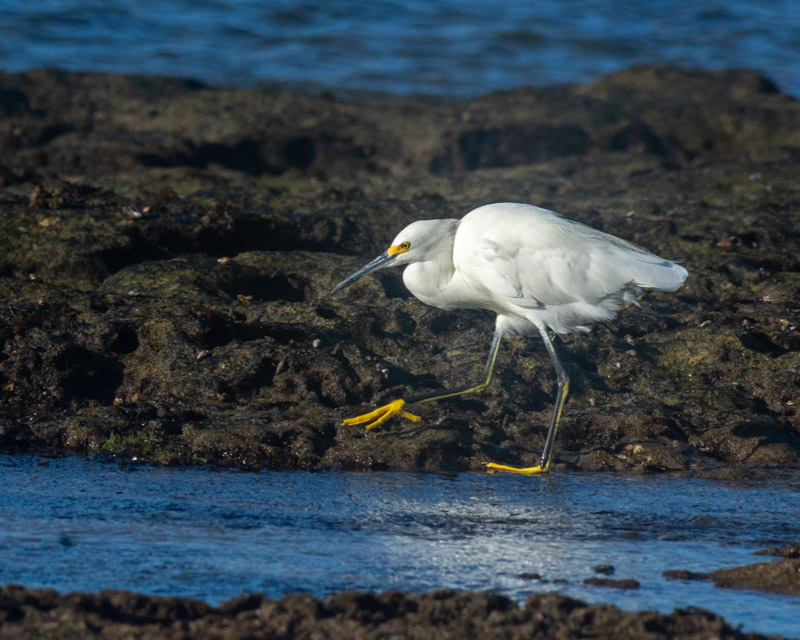
A Great Egret was hunting near the Snowy. Great Egrets are almost twice the size of Snowy Egrets. Their long, s-curved neck and yellow, dagger-like beak are impressive. They, too, were nearly hunted to extinction and as a symbol of conservation success, are now a symbol of the National Audubon Society. Great Egrets are also commonly seen at ponds and lakes in Tucson and southern Arizona during the winter.
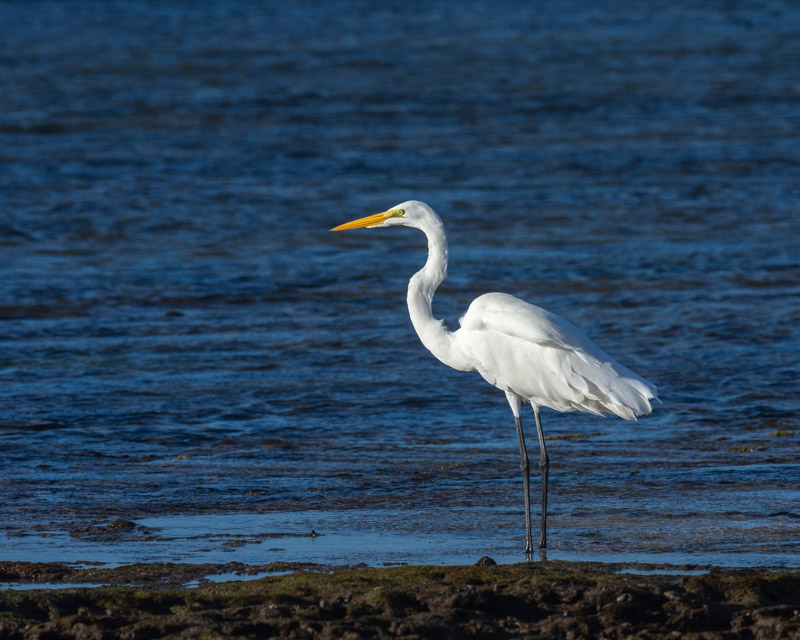
At the seashore you’re going to see gulls. Western Gulls were common in Rocky Point
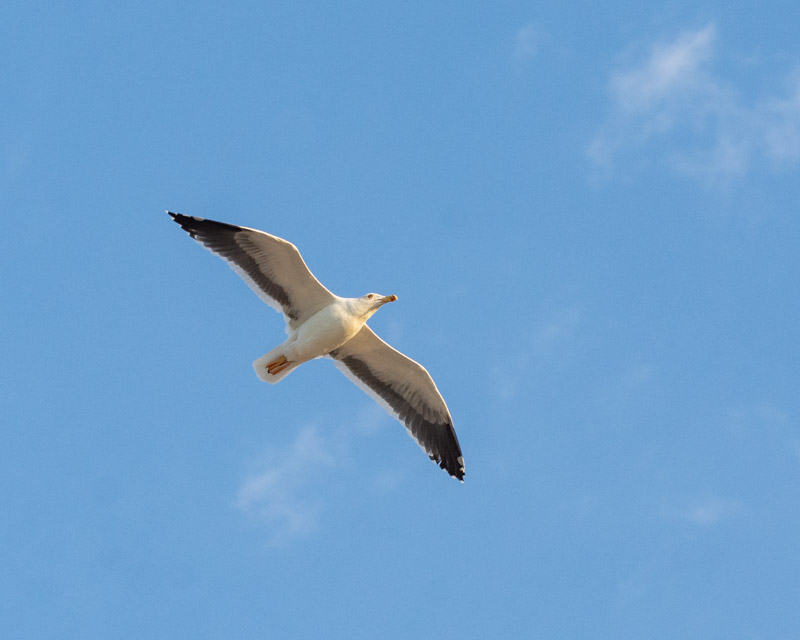
The final shorebird here is called a Willet. Willets are large shorebirds with long, straight bills. Although a very drab color, in flight their wing pattern is very distinctive. Turns out that plain old black and white can look rather pretty too.
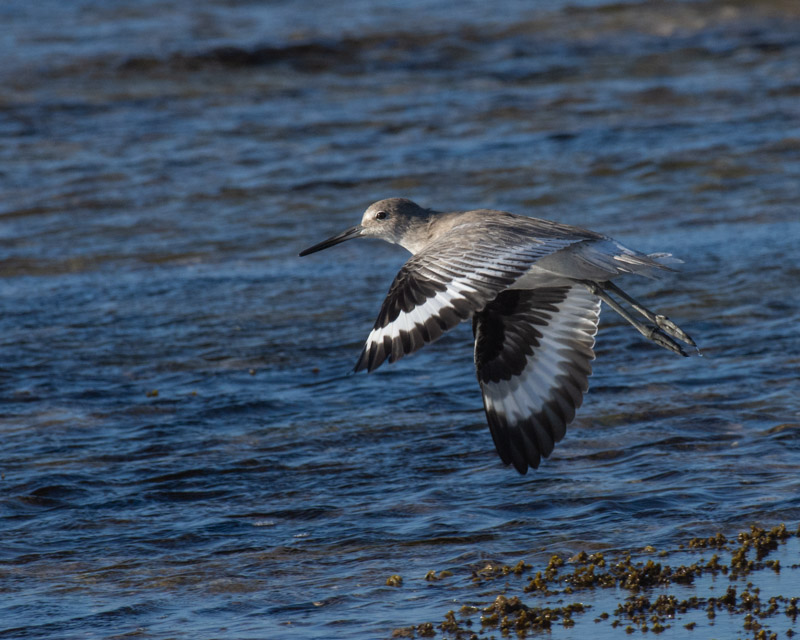
Willets usually feed alone on the beach and one bird was not happy when another Willet came into its feeding zone. Again, that black and white stripe on their wings is striking.
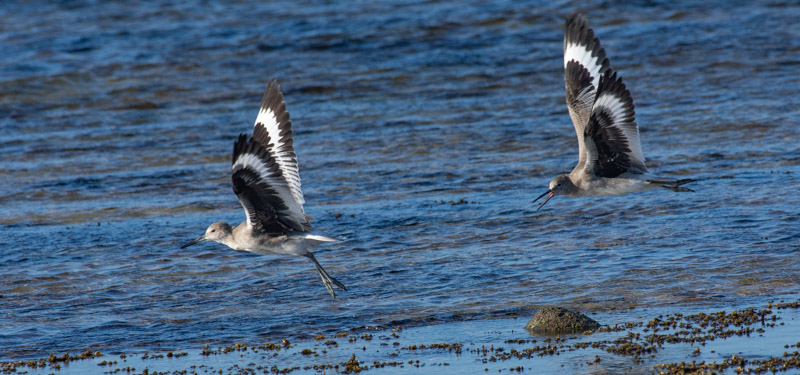
On our way home, I kept an eye out for raptors. I did not see another Caracara unfortunately, but there was one lone Harris’s Hawk on a distant saguaro. Harris’s Hawks are regular sights throughout Tucson and in the Foothills year round.
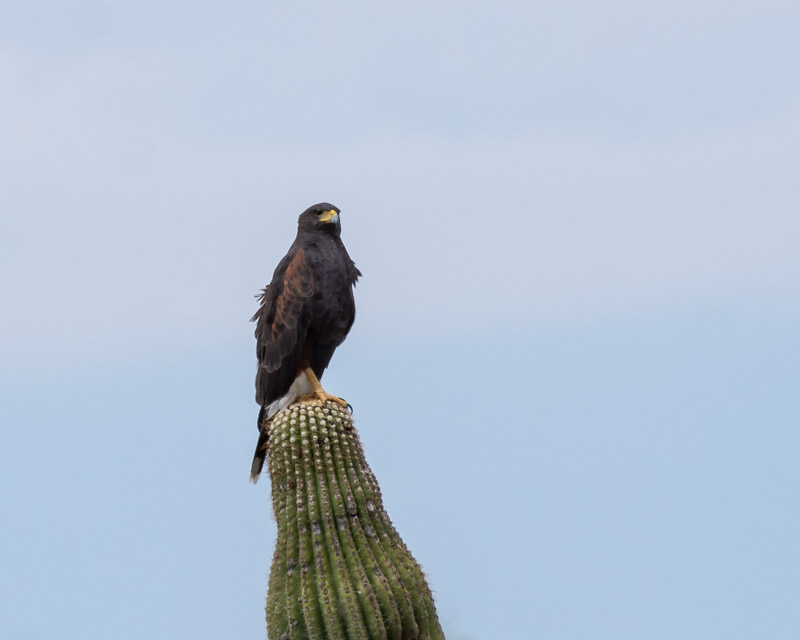
It was nice to be at the beach again and I hope to return to Rocky Point again in the future.
Return to Foothills Clusters Home
